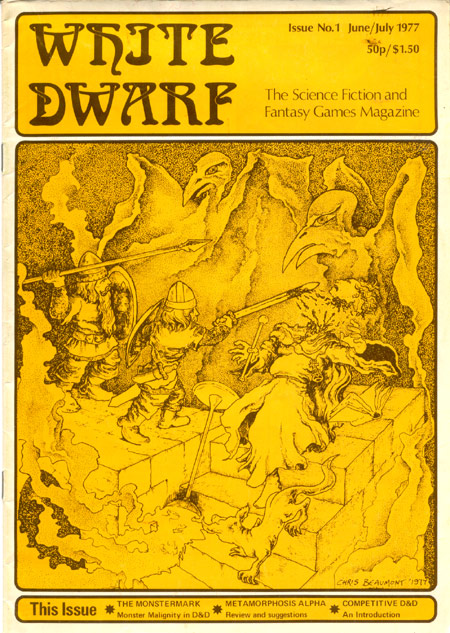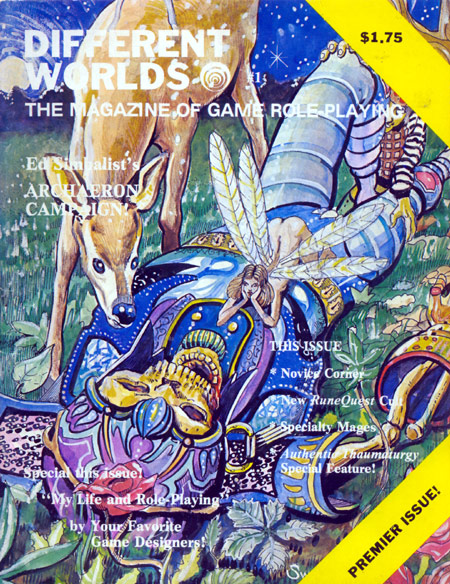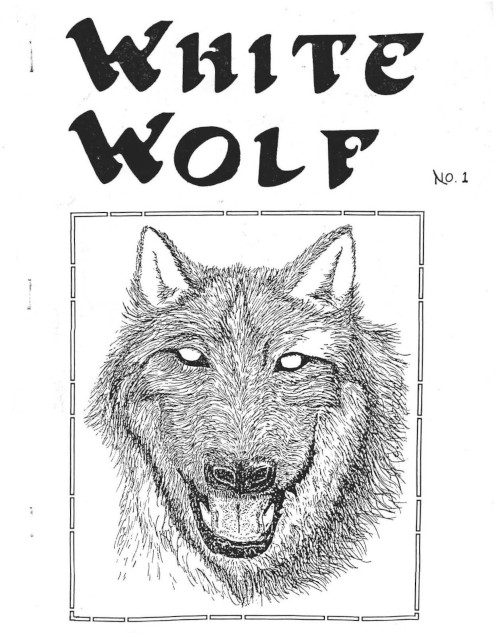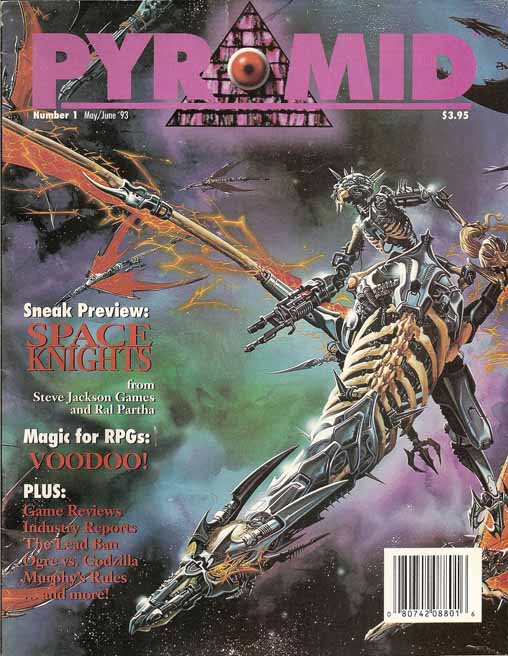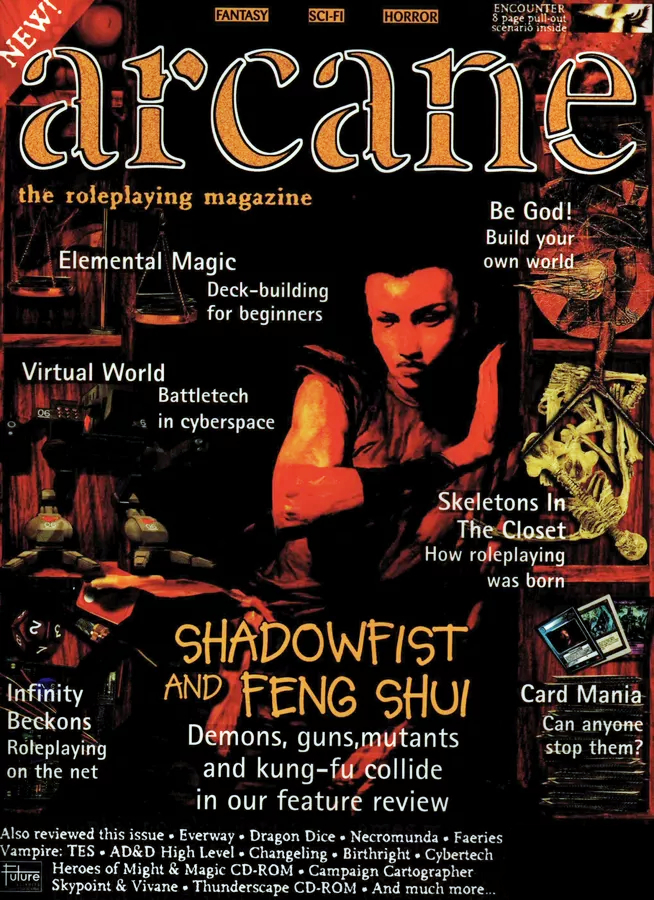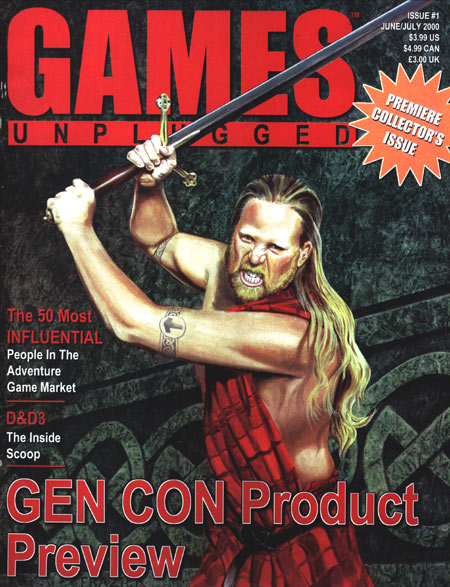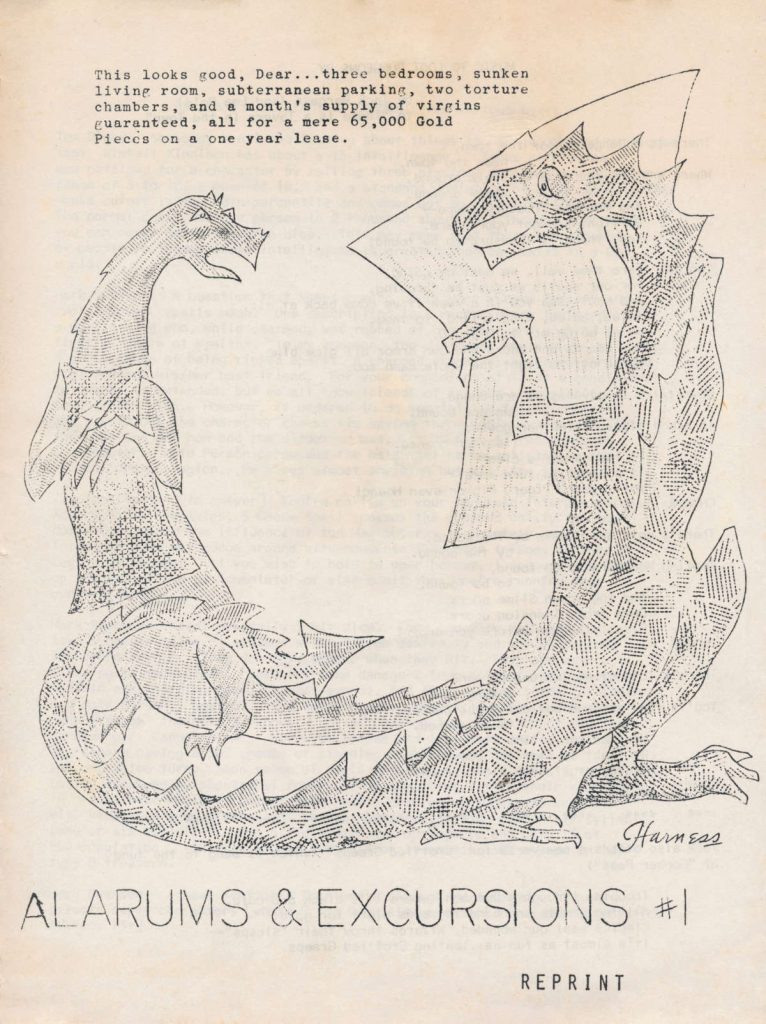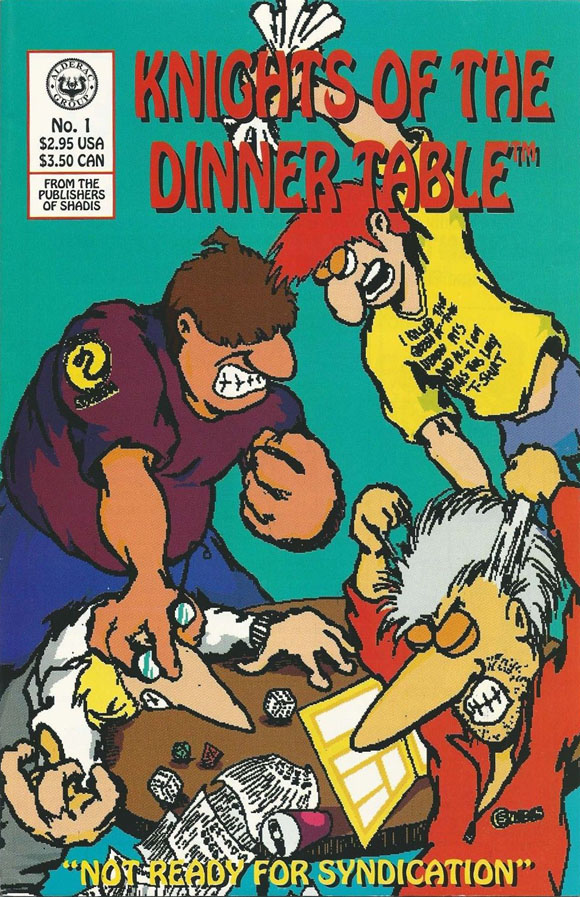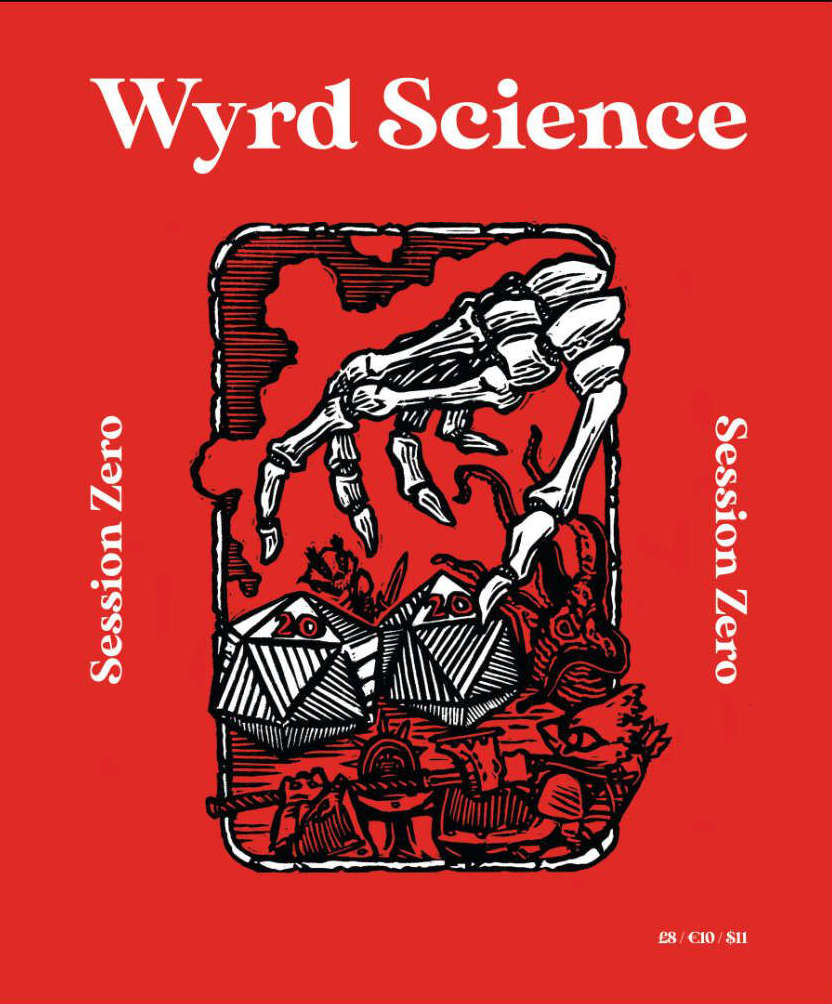This article was written as part of the company history for Dynasty Presentations, which was the last new history written for Designers & Dragons: The Lost Histories, Volume 2.
From The Strategic Review (1975-1976) onward, the industry has had numerous magazines pivotal to specific games and their publishers. What follows are those pivotal to the industry.
1. Space Gamer (1975-1990). Howard Thompson founded The Space Gamer to highlight the fantasy & science-fiction board games that were gaining steam in the mid ’70s. However, the magazine soon discovered Dungeons & Dragons (1977). That focus only increased when the magazine was sold to Steve Jackson. The Jackson era was Space Gamer’s height as an industry magazine, especially under the editorship of Aaron Allston, which also saw a spin-off, Fantasy Gamer (1983-1984). Jackson sold Space Gamer to Diverse Talents Inc, after which it continued on through a number of additional publishers. The original magazine ended with issue #88 (March/April 1990) from Future Combat Simulations. Eight more issues were published by Better Games, but they used Space Gamer as their house organ, not as an industry magazine.
2. Dragon (1976-2007). Dragon magazine was the longest running magazine in the industry, chalking up an impressive 31 years before Wizards of the Coast turned it into an electronic publication. Its first 34 issues, under Tim Kask, are particularly notable because Kask insisted that the magazine be kept distinct from TSR, making it the first industry-focused RPG magazine.
3. White Dwarf (1977-Present). When Games Workshop’s White Dwarf got its start, it was meant to supplement the US-created RPGs that Games Workshop was selling into the UK market. Over the years, Games Workshop picked up licenses to produce their own editions of games such as RuneQuest (1978) and Traveller (1977), and White Dwarf increasingly focused on those topics, but Games Workshop was big enough that it still offered a vision of the larger industry. Eventually, Games Workshop released products of their own too, most notably Warhammer Fantasy Battle (1984). Bit by bit, the magazine focused more on Games Workshop’s miniatures games than the wider roleplaying field. White Dwarf #100 (April 1988) is an arbitrary line for when the industry magazine truly became a house organ, but it’s a nice round number.
4. Different Worlds (1979-1987). Chaosium’s Different Worlds may have been the first magazine to self-consciously treat itself as an industry magazine, as seen by columns such as “My Life and Role-Playing”, which featured essays by game designers depicting their histories, and “A Letter from Gigi”, which was full of industry gossip. The magazine eventually left Chaosium with editor Tadashi Ehara. Those columns fell by the wayside in the later years, but Different Worlds nonetheless remained an industry magazine of the ’80s until the end.
5. White Wolf (1986-1995). Just a fanzine when the Wieck brothers founded it, White Wolf became the most important magazine in the industry as the company grew. Its salad days were in the late ’80s and early ’90s when publishers such as Chaosium, Lion Rampant, and SkyRealm Productions were contributing to the magazine. But in a tale as old as the industry, White Wolf began to focus more on its publisher’s own games. It went its own way in 1995 when it became White Wolf Inphobia and focused more widely on pop culture, but that final phase of White Wolf’s existence lasted less than a year.
6. Challenge (1986-1996). Reversing the usual trend of RPG magazines, Challenge started out as a house organ for GDW’s Traveller (1977) and Twilight: 2000 (1984), but evolved to become a magazine for the entire science-fiction and horror side of the industry. It wasn’t as focused on news, interviews, and designer notes as most of the industry magazines, but it nonetheless revealed the SFRPG and Horror RPG world through articles and reviews. It eventually winked out along with GDW.
7. Shadis (1990-1998). Like White Wolf, Jolly Blackburn’s Shadis started life as more of a fanzine. Though the magazine was RPG-focused, early issues delved into the CCGs that were taking over the industry as well. A little comic strip called “Knights of the Dinner Table” also featured in those early issues; it would become its own comic and eventually a magazine of its own from Kenzer & Company. Even after Blackburn left to focus on Knights of the Dinner Table, Shadis and its publisher AEG continued on. The magazine never became a house organ, but it ended due to the same tensions, shutting down due to AEG’s decision to focus on RPGs such as Legend of the Five Rings (1997) and 7th Sea (1999).
8. Pyramid (1993-1998). Of all the magazines on this list, Steve Jackson Games’ Pyramid was definitely a house organ from start to end. Nonetheless, its news of the wider industry in the ’90s was unparalleled, making it another worthy entry in the top-industry-magazine list. After ending its print publication in 1998, Pyramid continued on through multiple electronic volumes.
9. Arcane (1995-1997). Uniquely, Arcane was published not by an RPG company, but by a magazine company: Future Publishing. Some have called the results a “glossy overview”, but offering an overview is exactly what makes an industry magazine great. With extensive news and reviews, Arcane therefore closed out the ’90s with a look at the RPG world in its darkest hours.
10. Games Unplugged (2000-2004). By the 21st century, magazines were on their way out, and so Games Unplugged looked like it might be the last gasp of the industry magazine. It pushed hard on that angle, featuring news, interviews, designer notes, and even company histories. It was published first by Dynasty Presentations and then Fast Forward Entertainment
APA Mention. Alarums & Excursions (1975-Present). Lee Gold’s Alarums & Excrusions may actually be the most important roleplaying periodical around, as it’s run continuously through the lifetime of the industry and has featured ‘zines from many top designers over the years.
Comic Mention. Knights of the Dinner Table (1990-Present). Though mostly a comic book, Kenzer & Company’s Knights of the Dinner Table has featured short reviews and other text content for years.
Modern Mention. Wyrd Science (2021-Present). If there’s a modern contender to become a top industry magazine, it’s John Power’s Wyrd Science. It’s entirely about the industry, with histories, interviews, design theory, and more. The question will be whether it has the longevity to make an impact. Almost every notable magazine of the ‘90s made a splash with runs of 10,000 copies or more, but Wyrd Science struggles to hit its break-even point of 1,100-1,200 copies, revealing the weakness of magazines in the 21st century.



